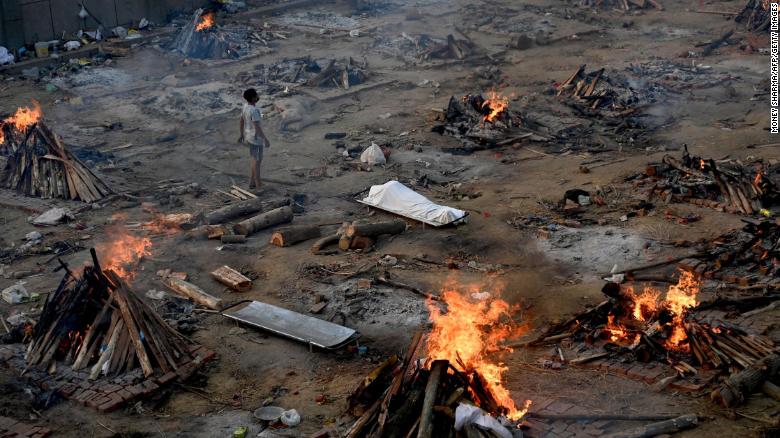
Gayatri Chakravarty Spivak, in an interview with Francis Wade, says, “There has been so much violence, so much exploitation, so much oppression for so long. These people have grown up in it, and they’ve lost the fear of death. They’re really not afraid to die. This is a very peculiar thing. Fanon said as a psychiatrist that when you come to a place where the equality of lives is denied—that basic equality that makes us human – then it produces violence in extremis. But it also produces a condition whereby you’re no longer afraid of death. And the subaltern speaks through dying, like [Mohamed] Bouazizi [Tunisian vendor whose killing sparked the Arab Spring], and like [George] Floyd.” Although she talks about this in the context of the ongoing Myanmar coup protests, it should provoke us to question – Does or can the subaltern really speak through dying? Particularly in a year where we have been surrounded by death, should we pronounce the death of subalterns as an act of ‘speaking’?
When Spivak wrote about the 1926 suicide case of Bhubaneswari Bhaduri and how she desired to claim her voice or opinion through death, one can say that there was a conscious attempt of ‘speaking’ by the subaltern through death. However, did Bouazizi or Floyd, as mentioned by her in the interview, really desired to die to make a statement? I do not think so. The idea of ‘speaking’ through death by the subaltern invites a romanticization of death, particularly of the poor, which hardly exist in reality.
I am provoked to talk about the deaths in Assam’s detention camps and the many suicides that surrounds the citizenship project of the National Register of Citizens (NRC), the deaths of which should not be considered as acts of ‘speaking’. The problem with Spivak’s point is that it projects the act of ‘dying’ by the subaltern as harbingers of revolution (though she claims that revolution to be short-lived), moving the focus away from the narrative where the bulk of the subaltern is languishing, decaying and dying without the desire to claim anything nor are being even noticed by the state or public alike. The subaltern does not ‘speak’ through dying; a large part of the subaltern is erased from state and public memory by being made into a number or simply by forgetting. A large part of the subaltern, through their deaths, are not bringing moments of revolution, nor desire even remotely to make a statement, and I am afraid Spivak’s argument, though contextualized, has the possibility of subduing that narrative.
Akhil Gupta, in his seminal work ‘Red Tape: Bureaucracy, Structural Violence and Poverty in India’(2012), talks about how there is a culture of normalcy and indifference towards the death of the poor in India that is actively cultivated over decades by the state. Hence, it was only when the upper and middle-class India started dying at the national capital that death ‘spoke’ up, not when many poor migrant workers languished their way back to reach their homes by walking hundreds of kilometres. Hence, it was only the second-wave pandemic management that the government was called out for globally, not the first wave when poor migrant labourers were walking to their deaths. A bulk of the subaltern neither does nor can speak through their deaths because the state and the public will never register such voices. Plus, a bulk of the subaltern does not wish to make a statement through their deaths, for they know that only in their living there exist possibilities.
Spivak’s statements have the prospect of decentering the narrative where the subaltern death is not an act of ‘empowerment’ but everyday violence of the state. A bulk of the subaltern is ‘dying’ without any claim to their narrative of deaths or their bodies. Hence their deaths are far from the romanticization of deaths being ‘voices of the subaltern’ or stirring any revolution. A bulk of the subaltern are dying every day without even knowing that they are dying and hence have little claim over their bodies or the consequences of their deaths. A bulk of the subaltern has a tremendous fear of deaths because they are aware that their deaths can bring no change in the situation but only increase state oppression and violence for their dear ones – the bulk of the subaltern instead struggles and wishes to live to get spaces of ‘speaking’. What I fear is Spivak’s romanticized contextual abstraction can shadow or belittle such narratives of a bulk of the subaltern, particularly at a time when a right-wing fascist state is already crippling and erasing the pain and deaths of the poor.
***
Bhargabi Das is a PhD Research Scholar at the National University of Ireland, Maynooth. She is working on fluid ecologies and state in Assam. Her research is funded by the Irish Research Council, Govt. of Ireland.
[…] of Dalits experiencing violence sanctioned by the social hierarchy of dominant-caste society.In an interview with Francis Wade, Gayatri Chakravarty Spivak delved into the pervasive violence, exploitation, and oppression endured by marginalized […]